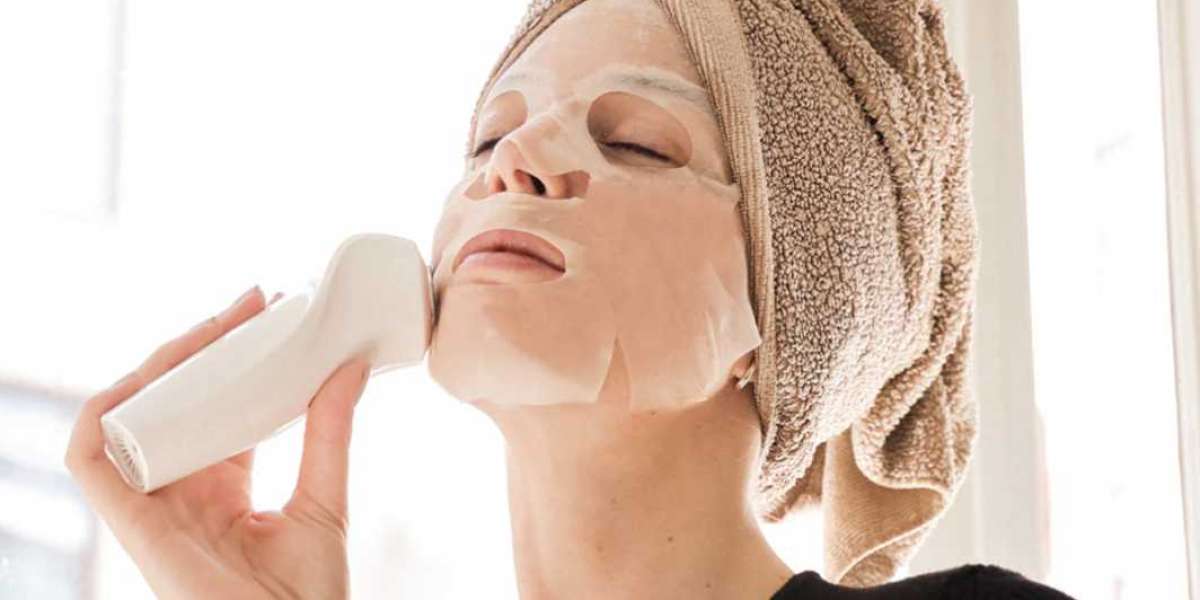**1. Understand Your Skin Type:
- Purpose: Different skin types have different needs, so understanding your skin type is crucial for selecting appropriate products.
- Steps:
- Identify whether your skin is oily, dry, combination, normal, or sensitive.
**2. Cleansing:
- Purpose: Remove dirt, oil, and makeup to keep the skin clean.
- Steps:
- Use a gentle cleanser suited for your skin type.
- Cleanse in the morning and evening to maintain skin health.
**3. Exfoliation (1-2 times a week):
- Purpose: Remove dead skin cells and promote cell turnover.
- Steps:
- Choose a mild exfoliant (physical or chemical) suitable for your skin type.
- Exfoliate once or twice a week to avoid overdoing it.
**4. Toning:
- Purpose: Balance the skin's pH and prepare it for the next steps.
- Steps:
- Apply a toner using a cotton pad or by gently pressing it into the skin.
**5. Serum:
- Purpose: Address specific skin concerns with targeted ingredients.
- Steps:
- Apply a serum containing ingredients like vitamin C, hyaluronic acid, or retinol.
- Choose a serum based on your skincare goals.
**6. Moisturizing:
- Purpose: Hydrate the skin and lock in moisture.
- Steps:
- Use a moisturizer suitable for your skin type.
- Apply in the morning and evening, especially after cleansing.
**7. Sunscreen (Morning Routine):
- Purpose: Protect the skin from harmful UV rays and prevent premature aging.
- Steps:
- Apply a broad-spectrum sunscreen with SPF 30 or higher in the morning.
- Reapply throughout the day if exposed to the sun.
**8. Eye Cream (Optional):
- Purpose: Address specific concerns around the eyes, such as dark circles or fine lines.
- Steps:
- Apply a small amount of eye cream using your ring finger, gently patting it around the orbital bone.
**9. Create a Consistent Routine:
- Purpose: Consistency is key to seeing results in skincare.
- Steps:
- Establish a morning and evening routine that includes cleansing, moisturizing, and sunscreen.
**10. Patch Test New Products:
- Purpose: Avoid potential adverse reactions to new products.
- Steps:
- Test new products on a small patch of skin to check for any adverse reactions before applying them to your entire face.
**11. Stay Hydrated and Eat a Healthy Diet:
- Purpose: Internal factors, such as hydration and nutrition, play a role in skin health.
- Steps:
- Drink plenty of water and maintain a balanced diet rich in fruits, vegetables, and essential nutrients.
**12. Consult a Dermatologist (If Needed):
- Purpose: Seek professional advice for persistent skin concerns.
- Steps:
- If you have specific skin issues or concerns, consult a dermatologist for personalized guidance.
1. Understand Your Skin Type:
- Purpose: Skin type determines the selection of appropriate skincare products.
- Technical Details:
- Identify your skin type: oily, dry, combination, normal, or sensitive.
- Consider factors such as sebum production, hydration levels, and susceptibility to irritation.
2. Cleansing:
- Purpose: To eliminate dirt, sebum, and impurities, maintaining a clean skin surface.
- Technical Details:
- Use a pH-balanced cleanser to prevent disruption of the skin's acid mantle.
- Ingredients like surfactants and emollients work to remove debris without over-drying.
3. Exfoliation (1-2 times a week):
- Purpose: Accelerate cell turnover, unclog pores, and promote a smoother complexion.
- Technical Details:
- Choose between physical exfoliants (microbeads, brushes) or chemical exfoliants (alpha or beta hydroxy acids).
- Exfoliate once or twice a week to avoid over-exfoliation and potential irritation.
4. Toning:
- Purpose: Restore skin pH, remove residual cleanser, and prep the skin for subsequent products.
- Technical Details:
- Opt for alcohol-free toners containing hydrating ingredients like glycerin or soothing agents such as chamomile extract.
5. Serum:
- Purpose: Deliver concentrated active ingredients to address specific skin concerns.
- Technical Details:
- Choose serums based on ingredients like vitamin C (antioxidant), hyaluronic acid (hydration), or retinol (anti-aging).
- Formulations often include liposomes or nanosomes for enhanced penetration.
6. Moisturizing:
- Purpose: Hydrate the skin, reinforce the skin barrier, and prevent transepidermal water loss.
- Technical Details:
- Opt for a moisturizer with a balanced ratio of humectants (e.g., glycerin), emollients (e.g., ceramides), and occlusives (e.g., dimethicone).
7. Sunscreen (Morning Routine):
- Purpose: Shield the skin from harmful UV rays and prevent photoaging.
- Technical Details:
- Choose a broad-spectrum sunscreen with SPF 30 or higher.
- Sunscreens may contain physical blockers (zinc oxide, titanium dioxide) or chemical filters (avobenzone, octocrylene).
8. Eye Cream (Optional):
- Purpose: Target specific concerns around the eyes, such as dark circles or fine lines.
- Technical Details:
- Look for ingredients like peptides, retinol, or caffeine to address specific eye-area concerns.
- Formulations may include emollients for a smoother application.
9. Create a Consistent Routine:
- Purpose: Consistency is crucial for efficacy in skincare.
- Technical Details:
- Establish a morning and evening routine with a consistent sequence of products.
- Allow sufficient time between product applications to maximize absorption.
10. Patch Test New Products:
- Purpose: Minimize the risk of adverse reactions to new skincare products.
- Technical Details:
- Apply a small amount of the new product to a discreet area and monitor for 24-48 hours.
- Patch testing helps identify potential allergies or sensitivities.
11. Stay Hydrated and Eat a Healthy Diet:
- Purpose: Internal factors influence skin health.
- Technical Details:
- Adequate water intake is vital for skin hydration.
- A diet rich in antioxidants, omega-3 fatty acids, and vitamins contributes to skin health.
12. Consult a Dermatologist (If Needed):
- Purpose: Seek professional guidance for persistent skin concerns.
- Technical Details:
- Dermatologists provide personalized skincare recommendations based on skin conditions.
- Procedures such as patch testing or skin biopsies may be employed for accurate diagnosis.
This technical guide emphasizes the importance of understanding the science behind skincare and tailoring routines to individual skin needs. Beginner skincare routines should be both effective and mindful of the specific characteristics of the skin, contributing to overall skin health and appearance.








